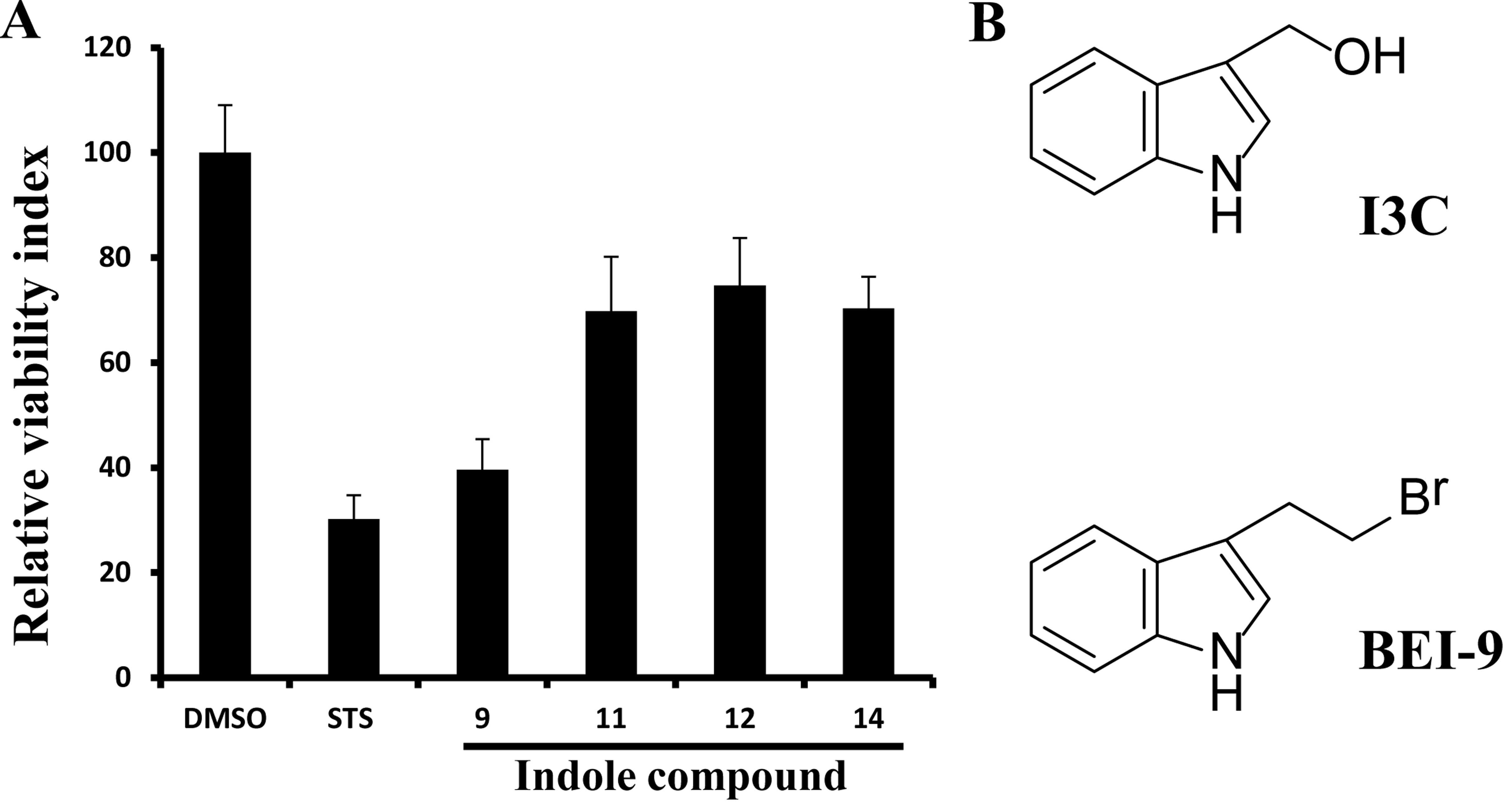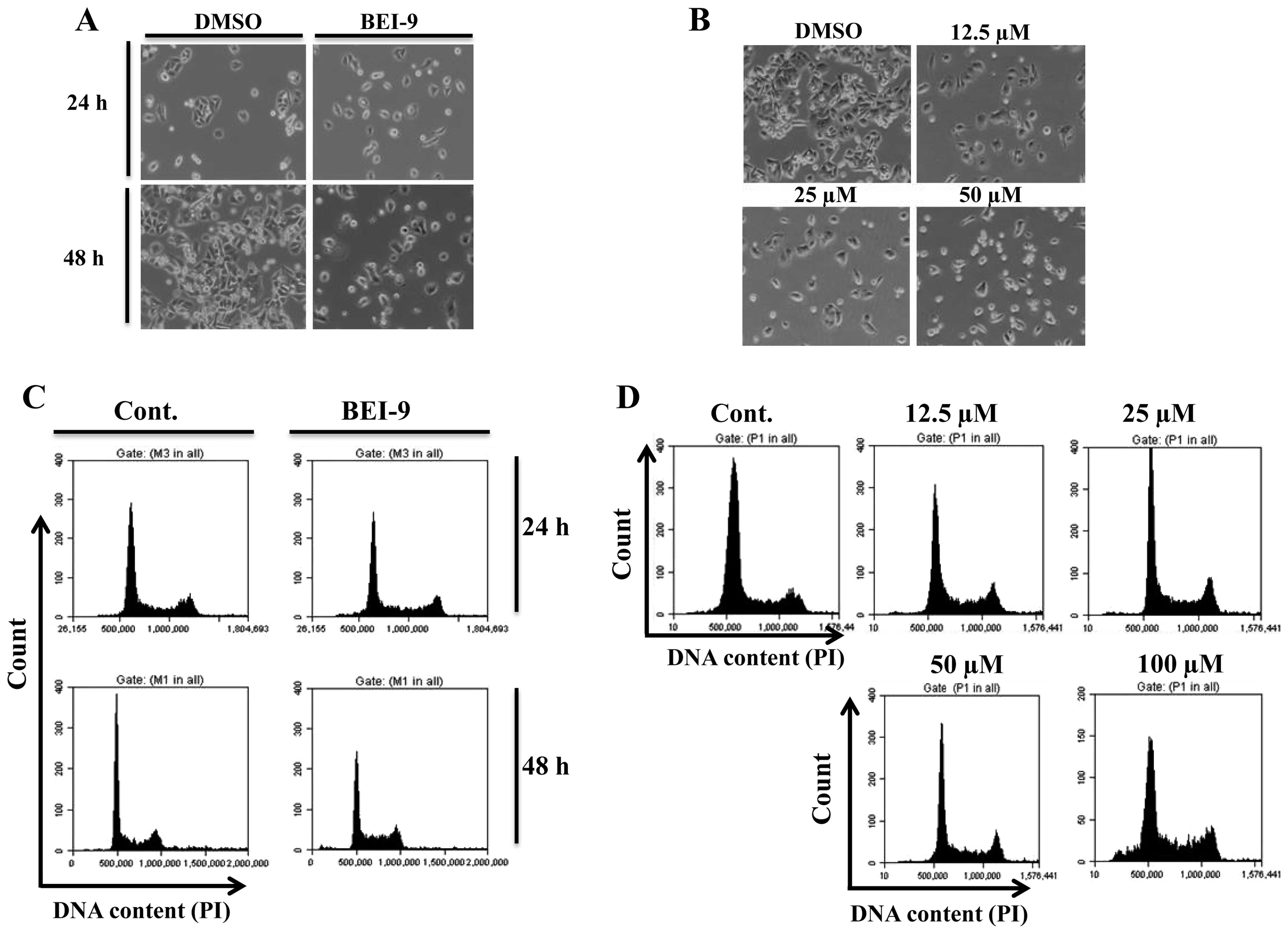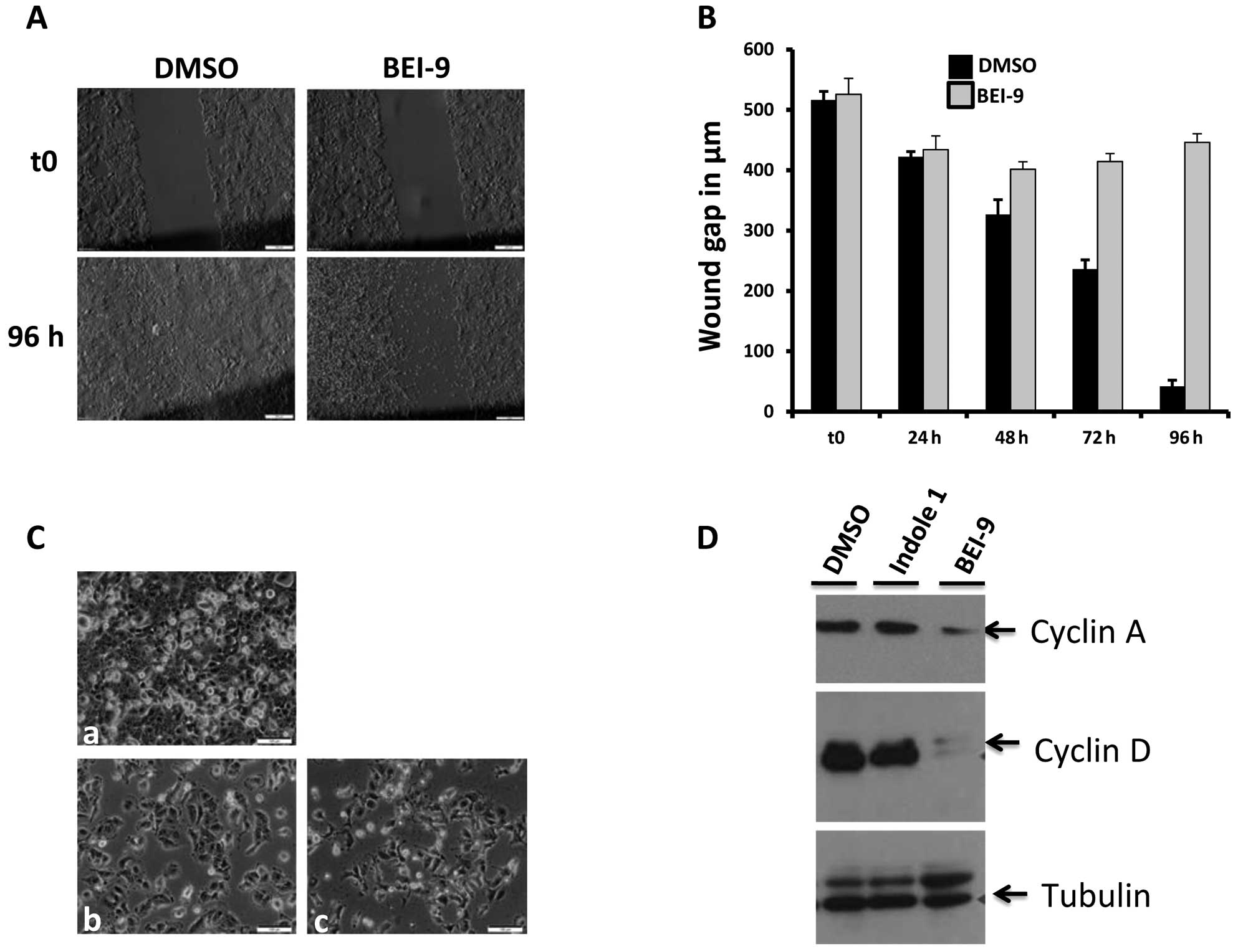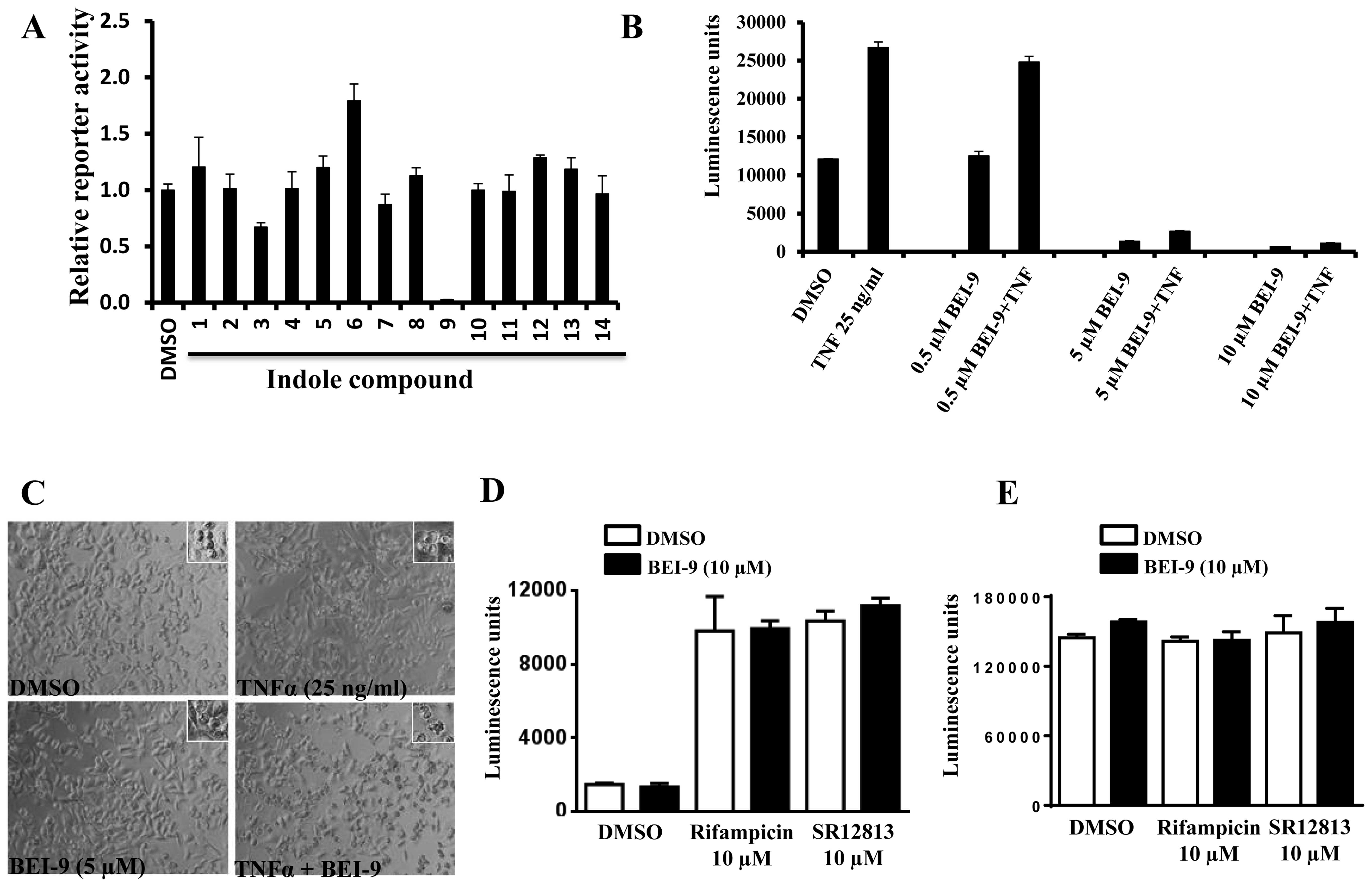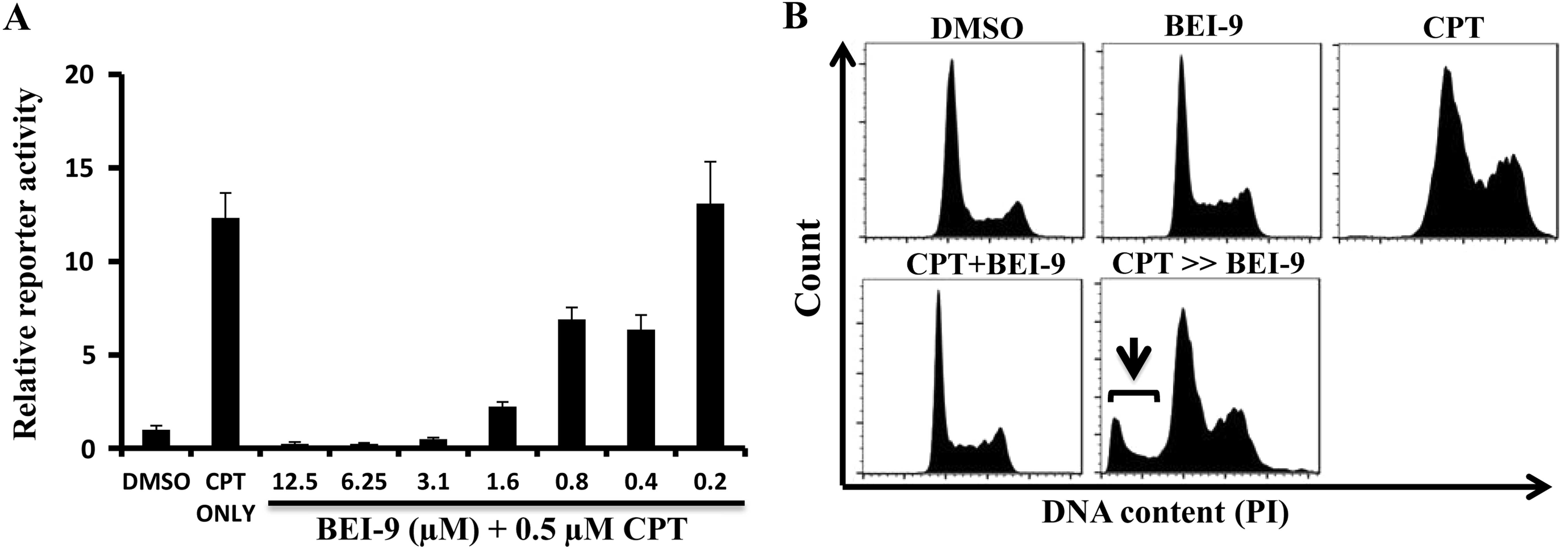|
1
|
Talalay P and Fahey JW: Phytochemicals
from cruciferous plants protect against cancer by modulating
carcinogen metabolism. J Nutr. 131(Suppl 11): S3027–S3033.
2001.
|
|
2
|
Murillo G and Mehta RG: Cruciferous
vegetables and cancer prevention. Nutr Cancer. 41:17–28. 2001.
View Article : Google Scholar
|
|
3
|
De Kruif CA, Marsman JW, Venekamp JC,
Falke HE, Noordhoek J, Blaauboer BJ and Wortelboer HM: Structure
elucidation of acid reaction products of indole-3-carbinol:
detection in vivo and enzyme induction in vitro. Chem Biol
Interact. 80:303–315. 1991. View Article : Google Scholar : PubMed/NCBI
|
|
4
|
Bradlow HL: Review. Indole-3-carbinol as a
chemoprotective agent in breast and prostate cancer. In Vivo.
22:441–445. 2008.PubMed/NCBI
|
|
5
|
Sung WS and Lee DG: Mechanism of decreased
susceptibility for Gram-negative bacteria and synergistic effect
with ampicillin of indole-3-carbinol. Biol Pharm Bull.
31:1798–1801. 2008. View Article : Google Scholar : PubMed/NCBI
|
|
6
|
Safe S, Papineni S and Chintharlapalli S:
Cancer chemotherapy with indole-3-carbinol, bis(3′-indolyl)methane
and synthetic analogs. Cancer Lett. 269:326–338. 2008. View Article : Google Scholar : PubMed/NCBI
|
|
7
|
Takada Y, Andreeff M and Aggarwal BB:
Indole-3-carbinol suppresses NF-kappaB and IkappaBalpha kinase
activation, causing inhibition of expression of NF-kappaB-regulated
anti-apoptotic and metastatic gene products and enhancement of
apoptosis in myeloid and leukemia cells. Blood. 106:641–649. 2005.
View Article : Google Scholar : PubMed/NCBI
|
|
8
|
Cram EJ, Liu BD, Bjeldanes LF and
Firestone GL: Indole-3-carbinol inhibits CDK6 expression in human
MCF-7 breast cancer cells by disrupting Sp1 transcription factor
interactions with a composite element in the CDK6 gene promoter. J
Biol Chem. 276:22332–22340. 2001. View Article : Google Scholar : PubMed/NCBI
|
|
9
|
Rahman KM, Ali S, Aboukameel A, Sarkar SH,
Wang Z, Philip PA, Sakr WA and Raz A: Inactivation of NF-kappaB by
3,3′-diindolylmethane contributes to increased apoptosis induced by
chemotherapeutic agent in breast cancer cells. Mol Cancer Ther.
6:2757–2765. 2007. View Article : Google Scholar : PubMed/NCBI
|
|
10
|
Song JM, Qian X, Teferi F, Pan J, Wang Y
and Kassie F: dietary diindolylmethane suppresses
inflammation-driven lung squamous cell carcinoma in mice. Cancer
Prev Res (Phila). 8:77–85. 2015. View Article : Google Scholar
|
|
11
|
Matsuzaki Y, Koyama M, Hitomi T, Kawanaka
M and Sakai T: Indole-3-carbinol activates the cyclin-dependent
kinase inhibitor p15(INK4b) gene. FEBS Lett. 576:137–140. 2004.
View Article : Google Scholar : PubMed/NCBI
|
|
12
|
Garcia HH, Brar GA, Nguyen DH, Bjeldanes
LF and Firestone GL: Indole-3-carbinol (I3C) inhibits
cyclin-dependent kinase-2 function in human breast cancer cells by
regulating the size distribution, associated cyclin E forms, and
subcellular localization of the CDK2 protein complex. J Biol Chem.
280:8756–8764. 2005. View Article : Google Scholar
|
|
13
|
Chinni SR and Sarkar FH: Akt inactivation
is a key event in indole-3-carbinol-induced apoptosis in PC-3
cells. Clin Cancer Res. 8:1228–1236. 2002.PubMed/NCBI
|
|
14
|
Howells LM, Gallacher-Horley B, Houghton
CE, Manson MM and Hudson EA: Indole-3-carbinol inhibits protein
kinase B/Akt and induces apoptosis in the human breast tumor cell
line MDA MB468 but not in the nontumorigenic HBL100 line. Mol
Cancer Ther. 1:1161–1172. 2002.PubMed/NCBI
|
|
15
|
Sundar SN, Kerekatte V, Equinozio CN, Doan
VB, Bjeldanes LF and Firestone GL: Indole-3-carbinol selectively
uncouples expression and activity of estrogen receptor subtypes in
human breast cancer cells. Mol Endocrinol. 20:3070–3082. 2006.
View Article : Google Scholar : PubMed/NCBI
|
|
16
|
Hsu JC, Zhang J, Dev A, Wing A, Bjeldanes
LF and Firestone GL: Indole-3-carbinol inhibition of androgen
receptor expression and downregulation of androgen responsiveness
in human prostate cancer cells. Carcinogenesis. 26:1896–1904. 2005.
View Article : Google Scholar : PubMed/NCBI
|
|
17
|
Li Y, Li X and Guo B: Chemopreventive
agent 3,3′-diindolylmethane selectively induces proteasomal
degradation of class I histone deacetylases. Cancer Res.
70:646–654. 2010. View Article : Google Scholar : PubMed/NCBI
|
|
18
|
Bonnesen C, Eggleston IM and Hayes JD:
Dietary indoles and isothiocyanates that are generated from
cruciferous vegetables can both stimulate apoptosis and confer
protection against DNA damage in human colon cell lines. Cancer
Res. 61:6120–6130. 2001.PubMed/NCBI
|
|
19
|
Chintharlapalli S, Smith R III, Samudio I,
Zhang W and Safe S:
1,1-Bis(3′-indolyl)-1-(p-substitutedphenyl)methanes induce
peroxisome proliferator-activated receptor gamma-mediated growth
inhibition, transactivation, and differentiation markers in colon
cancer cells. Cancer Res. 64:5994–6001. 2004. View Article : Google Scholar : PubMed/NCBI
|
|
20
|
Frydoonfar HR, McGrath DR and Spigelman
AD: Inhibition of proliferation of a colon cancer cell line by
indole-3-carbinol. Colorectal Dis. 4:205–207. 2002. View Article : Google Scholar
|
|
21
|
Weng JR, Tsai CH, Kulp SK and Chen CS:
Indole-3-carbinol as a chemopreventive and anti-cancer agent.
Cancer Lett. 262:153–163. 2008. View Article : Google Scholar : PubMed/NCBI
|
|
22
|
Ahmad A, Sakr WA and Rahman KW: Mechanisms
and therapeutic implications of cell death induction by indole
compounds. Cancers (Basel). 3:2955–2974. 2011. View Article : Google Scholar
|
|
23
|
Samuel T, Fadlalla K, Gales DN, Putcha BD
and Manne U: Variable NF-κB pathway responses in colon cancer cells
treated with chemotherapeutic drugs. BMC Cancer. 14:5992014.
View Article : Google Scholar
|
|
24
|
Pondugula SR, Flannery PC, Apte U, Babu
JR, Geetha T, Rege SD, Chen T and Abbott KL:
Mg2+/Mn2+-dependent phosphatase 1A is
involved in regulating pregnane X receptor-mediated cytochrome p450
3A4 gene expression. Drug Metab Dispos. 43:385–391. 2015.
View Article : Google Scholar : PubMed/NCBI
|
|
25
|
Pondugula SR, Flannery PC, Abbott KL,
Coleman ES, Mani S, Samuel T and Xie W: Diindolylmethane, a
naturally occurring compound, induces CYP3A4 and MDR1 gene
expression by activating human PXR. Toxicol Lett. 232:580–589.
2015. View Article : Google Scholar
|
|
26
|
Samuel T, Fadlalla K, Mosley L, Katkoori
V, Turner T and Manne U: Dual-mode interaction between quercetin
and DNA-damaging drugs in cancer cells. Anticancer Res. 32:61–71.
2012.PubMed/NCBI
|
|
27
|
Casimiro MC, Velasco-Velázquez M,
Aguirre-Alvarado C and Pestell RG: Overview of cyclins D1 function
in cancer and the CDK inhibitor landscape: past and present. Expert
Opin Investig Drugs. 23:295–304. 2014. View Article : Google Scholar : PubMed/NCBI
|
|
28
|
Guttridge DC, Albanese C, Reuther JY,
Pestell RG and Baldwin AS Jr: NF-kappaB controls cell growth and
differentiation through transcriptional regulation of cyclin D1.
Mol Cell Biol. 19:5785–5799. 1999.PubMed/NCBI
|
|
29
|
Pondugula SR and Mani S: Pregnane
xenobiotic receptor in cancer pathogenesis and therapeutic
response. Cancer Lett. 328:1–9. 2013. View Article : Google Scholar
|
|
30
|
Codony-Servat J, Marín-Aguilera M, Visa L,
García-Albéniz X, Pineda E, Fernández PL, Filella X, Gascón P and
Mellado B: Nuclear factor-kappa B and interleukin-6 related
docetaxel resistance in castration-resistant prostate cancer.
Prostate. 73:512–521. 2013. View Article : Google Scholar
|
|
31
|
Tsang PS, Cheuk AT, Chen QR, Song YK,
Badgett TC, Wei JS and Khan J: Synthetic lethal screen identifies
NF-κB as a target for combination therapy with topotecan for
patients with neuroblastoma. BMC Cancer. 12:1012012. View Article : Google Scholar
|
|
32
|
Huang TT, Wuerzberger-Davis SM, Seufzer
BJ, Shumway SD, Kurama T, Boothman DA and Miyamoto S: NF-kappaB
activation by camptothecin. A linkage between nuclear DNA damage
and cytoplasmic signaling events. J Biol Chem. 275:9501–9509. 2000.
View Article : Google Scholar : PubMed/NCBI
|
|
33
|
Degterev A, Huang Z, Boyce M, Li Y, Jagtap
P, Mizushima N, Cuny GD, Mitchison TJ, Moskowitz MA and Yuan J:
Chemical inhibitor of nonapoptotic cell death with therapeutic
potential for ischemic brain injury. Nat Chem Biol. 1:112–119.
2005. View Article : Google Scholar
|
|
34
|
Takahashi N, Duprez L, Grootjans S,
Cauwels A, Nerinckx W, DuHadaway JB, Goossens V, Roelandt R, Van
Hauwermeiren F, Libert C, et al: Necrostatin-1 analogues: critical
issues on the specificity, activity and in vivo use in experimental
disease models. Cell Death Dis. 3:e4372012. View Article : Google Scholar : PubMed/NCBI
|
|
35
|
Degterev A, Maki JL and Yuan J: activity
and specificity of necrostatin-1, small-molecule inhibitor of RIP1
kinase. Cell Death Differ. 20:3662013. View Article : Google Scholar :
|
|
36
|
Degterev A, Hitomi J, Germscheid M, Ch’en
IL, Korkina O, Teng X, Abbott D, Cuny GD, Yuan C, Wagner G, et al:
Identification of RIP1 kinase as a specific cellular target of
necrostatins. Nat Chem Biol. 4:313–321. 2008. View Article : Google Scholar : PubMed/NCBI
|
|
37
|
King MD, Whitaker-Lea WA, Campbell JM,
Alleyne CH Jr and Dhandapani KM: Necrostatin-1 reduces
neurovascular injury after intracerebral hemorrhage. Int J Cell
Biol. 2014:4958172014. View Article : Google Scholar : PubMed/NCBI
|
|
38
|
Vandenabeele P, Grootjans S, Callewaert N
and Takahashi N: Necrostatin-1 blocks both RIPK1 and IDO:
consequences for the study of cell death in experimental disease
models. Cell Death Differ. 20:185–187. 2013. View Article : Google Scholar :
|















